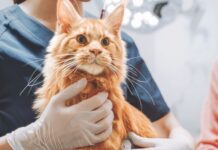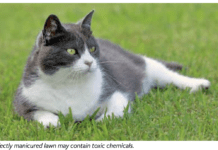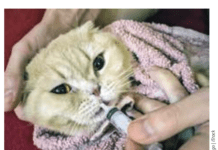If your usually confident cat starts acting confused, bumping into objects and having difficulty finding his food bowl, he could have a rare but serious condition. Sudden blindness can develop seemingly overnight and needs immediate veterinary intervention. Depending on the timing, an ophthalmologist may be able to preserve some vision.
The condition has many causes, from central nervous system disease to inflammation; however, “As a veterinary ophthalmologist, I would say the most common cause of sudden blindness that I see among cats who appeared otherwise normal prior to the vision loss is a condition called hypertensive retinopathy,” says Eric C. Ledbetter, DVM, ACVO, Associate Professor of Ophthalmology at Cornell University Hospital for Animals.
Blood Pressure
Hypertensive retinopathy most commonly affects older cats and is seen in those with high blood pressure (hypertension). Any breed may develop the disease. It develops when long-term elevated blood pressure damages the blood vessels in the retina, the lining at the back of the eye that converts signals to the brain to produce images. The blood vessels then leak fluid, which can accumulate under the retina, causing it to detach and result in the abrupt onset of bilateral blindness.
Perhaps the second most common cause of sudden blindness is uveitis, an inflammation of the uvea, the dark tissue within the eye containing blood vessels. An inflamed uvea is painful and affects the iris, the colored part of the eye; the ciliary body, the structure in the eye that releases a clear liquid; and choroid tissue, the layer of blood vessels and connective tissue — all threatening eyesight.
“Other causes of sudden blindness include acute glaucoma, optic neuritis (inflammation of the optic nerve) and central nervous system diseases,” says Dr. Ledbetter, who researches feline eye diseases. He advises owners to be alert to these signs a vision problem is developing:
– Cats with uveitis may have ocular cloudiness, discharge or redness as a result of hemorrhage.
– Those with hypertensive retinopathy can have pupils that may appear dilated, unresponsive or poorly responsive to incoming light.
However, other causes, such as retinal detachment or optic neuritis, can develop suddenly, with no warning signs, Dr. Ledbetter says. “A diagnosis requires a thorough history, physical examination and complete ocular examination by your cat’s veterinarian,” Dr. Ledbetter says. “This is adequate to achieve a diagnosis for many cats. However, in instances including hypertensive retinopathy and uveitis, additional examinations or testing, including neurologic examination, blood pressure measurements and blood work, may be required.” Referral to an ophthalmologist may be required in some cases.
Cornell
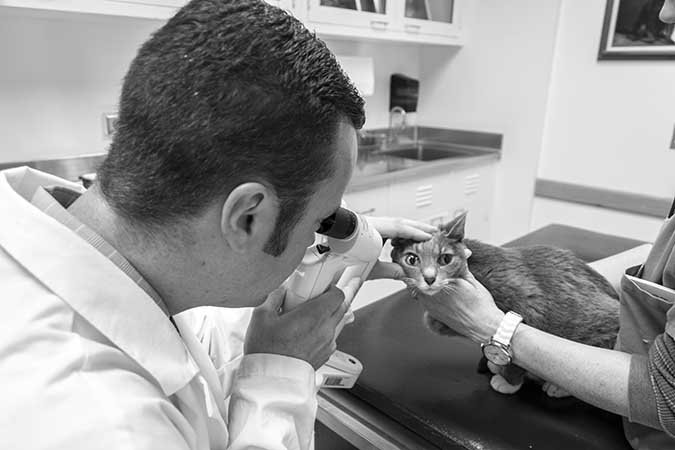

Treatment can include a variety of medications or surgeries. The key is often the owners’ quick response. Veterinarians may be able to preserve the remaining vision or reverse vision loss, depending on the underlying cause and response to treatment.
For hypertensive retinopathy, veterinarians typically first prescribe an oral medication called amlodipine to lower blood pressure. Depending on the cause, other medications and long-term medical management may be required.
If infection is found, the veterinarian will prescribe an oral antibiotic and, if the cause is a fungus, anti-fungal drugs. Administering medication to a cat can be challenging, so ask the veterinarian for a demonstration and enlist help if needed.
An Elderly Cat Encounters Blindness
The first sign that 16-year-old Gertie had a problem was when her owners saw her urinating in a potted houseplant. They snatched her and headed for the litter box in the laundry room. But Gertie bolted and ran head-first into the wall. They realized their sweet old cat was suddenly blind in both eyes.
Gertie already had high blood pressure that can cause detached retinas, and her veterinarian prescribed medication to reduce it. Her owners moved her litter box to another room, which she immediately found and adapted to for the next four years, coping with blindness and a mostly sympathetic dog in a large, two-story home where she died peacefully at the age of 20.
Variable Prognosis
© kozorog | Bigstock
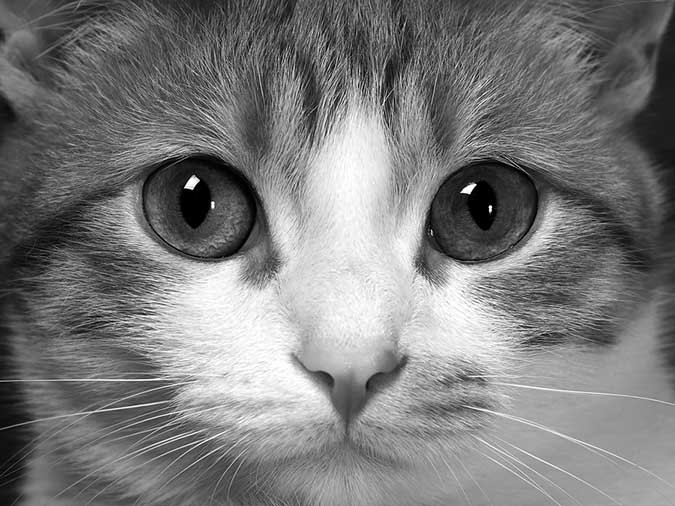

The veterinarian will examine your cat’s eyes at regular intervals. The long-term prognosis for cats with sudden blindness is highly variable, says Dr. Ledbetter. “Some causes, such as hypertensive retinopathy, are readily treatable and either curable or controllable. Others, such as optic neuritis or acute glaucoma, carry a more guarded long-term prognosis or are not readily treatable.”
The outlook for retinal detachment associated with hypertensive retinopathy relies primarily on the early administration of medication to lower blood pressure. If the retinas remain detached for more than several days, the prospect of the return of normal vision is guarded.
“It is important that owners always consider sudden blindness an emergency situation,” Dr. Ledbetter says. “Medical evaluation by a veterinarian should occur immediately. Prompt diagnosis and treatment may help improve the long-term prognosis. In addition, some of the conditions associated with sudden blindness — such as hypertensive retinopathy, central nervous systemic disease and some causes of uveitis — are serious systemic disorders, and their rapid identification and treatment are critical to preserve general health.”
Research on Cats Undergoing Dental Work: ‘A Wakeup Call’
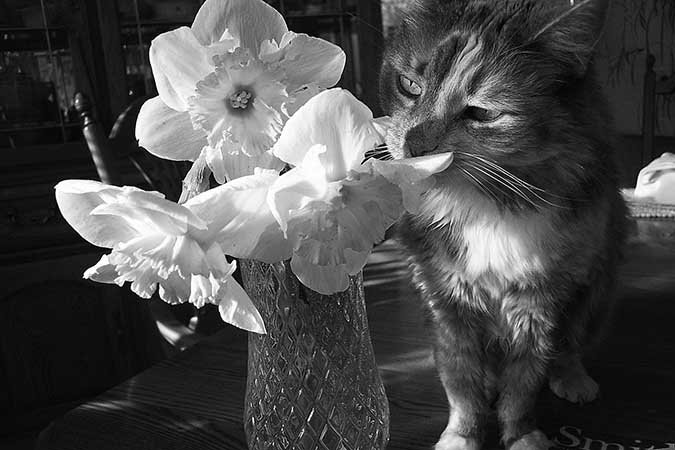

Keeping a cat’s mouth open too wide during general anesthesia may result in reduced blood flow and sudden blindness, according to research by anesthesiologist Manuel Martin-Flores, MV, ACVAA, and his colleagues at Cornell University College of Veterinary Medicine.
Veterinarians use mouth gags, either simple plastic tubes or more complicated spring-loaded devices, to allow access to the oral cavity during dental procedures and surgeries such as cleaning, tooth extraction and endoscopy. In cats, the maxillary arteries — those that reach areas of the face, including the mouth, teeth, nose and muscles — are the main source of blood supply to the retinas and brain.
The location of the maxillary arteries predisposes them to compression when the cat’s mouth is fully opened, possibly leading to the development of central neurological problems, including blindness, Dr. Martin-Flores says.
Authors of the study, funded by the Cornell Feline Health Center and published in The Veterinary Journal, studied six healthy cats undergoing anesthesia, opening their mouths fully or less than fully with the gags. They used electroretinograms, or ERGs, to test retinal function and found that retinal function was decreased when the mouth was open wider, suggesting that blood flow to the retina or brain was decreased or even absent. However, they saw no changes in the ERGs when they opened the cats’ mouths less than fully.
In a guest editorial in The Veterinary Journal, Alexander M. Reiter, Dr med vet, chief of the Dentistry and Oral Surgery Service at the University of Pennsylvania School of Veterinary Medicine, wrote that such studies should be a wake-up call for those working in feline dentistry and oral surgery. “Martin-Flores et al. not only provide further evidence of reduced maxillary artery blood flow when cats’ mouths are opened wide, they also offer a simple strategy to reduce the risk of post-anesthetic blindness by using custom-made plastic gags … This is a fine example of applied research that can readily be tailored to everyday veterinary practice.”

